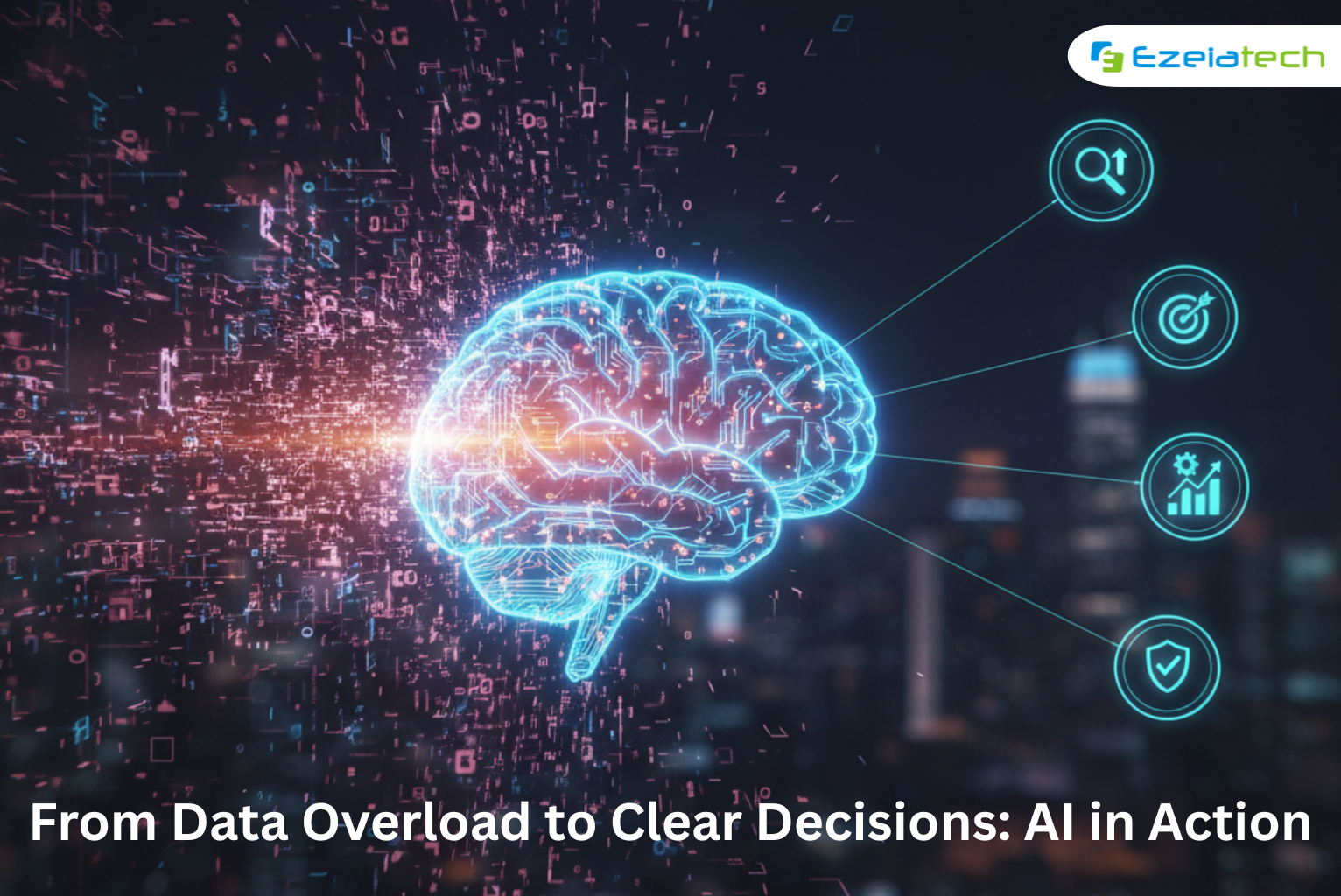Introduction
In today’s digital era, businesses generate data at an unprecedented scale. Every transaction, click, and sensor event creates new data points. While this offers tremendous potential for insights, it also creates a new challenge — data overload. Many organizations find themselves overwhelmed by dashboards, reports, and notifications, which slows down and stresses decision-making.
Research indicates that over 70% of professionals feel overwhelmed by the volume of data they must process daily, which often delays critical decisions. In an economy where speed and precision matter, this is a problem businesses cannot afford to ignore.
This is where Artificial Intelligence (AI) comes in — not as a replacement for human judgment, but as an enabler that filters noise, surfaces the most important signals, and supports better, faster decision-making.
What Causes Data Overload?
Before we look at how AI solves the issue, it’s important to understand why data overload happens:
- Volume: Massive data generated from multiple sources.
- Variety: Structured, semi-structured, and unstructured data spread across tools and formats.
- Velocity: Data coming in real-time, requiring quick action.
Lack of Prioritization: Teams struggle to separate critical data from background noise.
How AI Turns Data into Decisions
AI offers several capabilities that cut through complexity:
| AI Capability | What It Does | Impact on Decisions |
| Anomaly Detection | Identifies unusual patterns in data automatically | Prevents small issues from becoming big problems |
| Natural Language Processing | Summarizes text, finds meaning in unstructured data | Saves hours of manual review and analysis |
| Predictive Analytics | Uses historical data to forecast outcomes | Helps businesses act proactively, not reactively |
| Automated Dashboards | Surfaces key metrics relevant to goals | Allows leaders to focus on what really matters |
Real-World Applications
Here are a few examples of AI solving data overload challenges:
- Predictive Maintenance: AI flags equipment failures before they occur, preventing costly downtime.
- Customer Sentiment Analysis: NLP tools process thousands of reviews or support tickets to highlight common issues.
- Executive Decision Dashboards: Automated systems provide real-time business health summaries for C-level leaders.
Fraud Detection: AI models detect suspicious transactions faster than traditional rule-based systems.
Best Practices for Using AI in Decision-Making
- Define Clear Goals: Start with business problems, not just data availability.
- Ensure Data Quality: Clean, complete data is essential for accurate insights.
- Keep Humans in the Loop: Use AI to support, not replace, human decision-making.
- Iterate and Improve: Continuously train and refine AI models as new data becomes available.
Challenges to Watch Out For
While AI is powerful, it comes with considerations:
- Bias and Fairness: Poor-quality data can produce biased results.
- Overreliance: Always validate AI recommendations before acting.
- Change Management: Teams need training to trust and adopt AI insights.
Conclusion
Data overload is no longer just a technology challenge — it’s a business risk. Organizations that fail to manage it will face delayed decisions, missed opportunities, and competitive disadvantage.
AI offers a way forward by filtering noise, prioritizing critical information, and empowering teams to act with confidence. Businesses that adopt AI-driven decision-making today will enjoy faster innovation, improved efficiency, and a significant competitive edge tomorrow.







